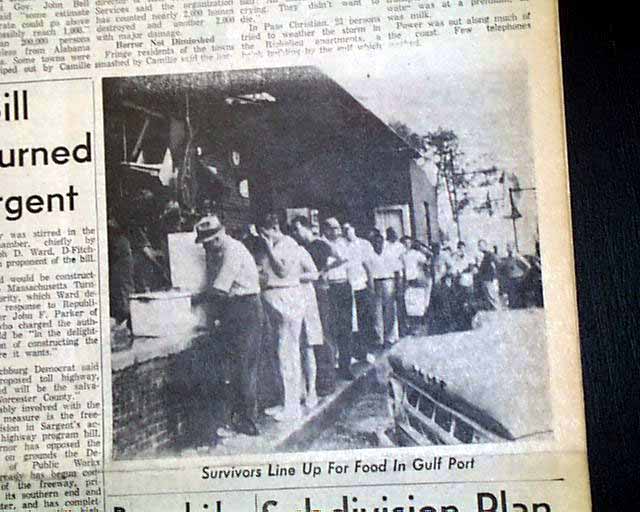
There were only three hurricanes in the 20th century that made landfall as a Category 5. The strongest hurricane of the century was the Labor Day Hurricane of 1935, Hurricane Andrew ranked third and Camille was second.
On August 5th, 1969 Camille was detected as a tropical wave off the western coast of Africa and slowly moved westward across the Atlantic Ocean. It passed over the Lesser Antilles, Jamaica and the Bahamas as thunderstorms. On August 14th, a definite pattern of a cyclonic formation began and it was named Tropical Storm Camille. By this time, the storm was sitting west of the Cayman Islands.
As Camille travelled over the Caribbean Sea, it intensified due to drawing in additional moisture and warm air. When it passed by the eastern coast of Cuba, winds were clocked at 115 mph. It weakened slightly over Cuba and then intensified again. By the time it reached the western end of Cuba on August 15, 1969, Camille was declared a Category 3 hurricane.
Forecasters predicted that Camille would turn to the northeast and make landfall on the Florida panhandle. This did not happen. It continued on a northwest path across the Gulf of Mexico. The warm waters of the gulf caused further intensification. The hurricane watch for Florida was cancelled.
On August 16th, reconnaissance aircraft measured the wind speed of Camille and raised it to a Category 4 hurricane. Late in the evening of August 16th, hurricane hunter aircraft clocked the wind speed of Camille at 160 mph on the outer bands and 200 mph at the eye. Now as a Category 5 hurricane, Camille was approximately 100 miles from the Mississippi River Delta.
At approximately 11:30pm on August 17th, 1969, Camille made landfall at Clermont Harbor, just east of Bay St. Louis, Mississippi. As stated in a report by the National Ocean Atmospheric Association (NOAA); “Actual maximum sustained wind will never be known as the hurricane destroyed all wind-recording instruments in the landfall area. Estimates at the coast were near 200 mph. Columbia, Mississippi, located 75 miles inland, reported 120 mph sustained winds. A storm tide of 24.6 ft occurred at Pass Christian, Mississippi.”


